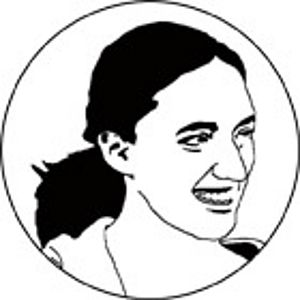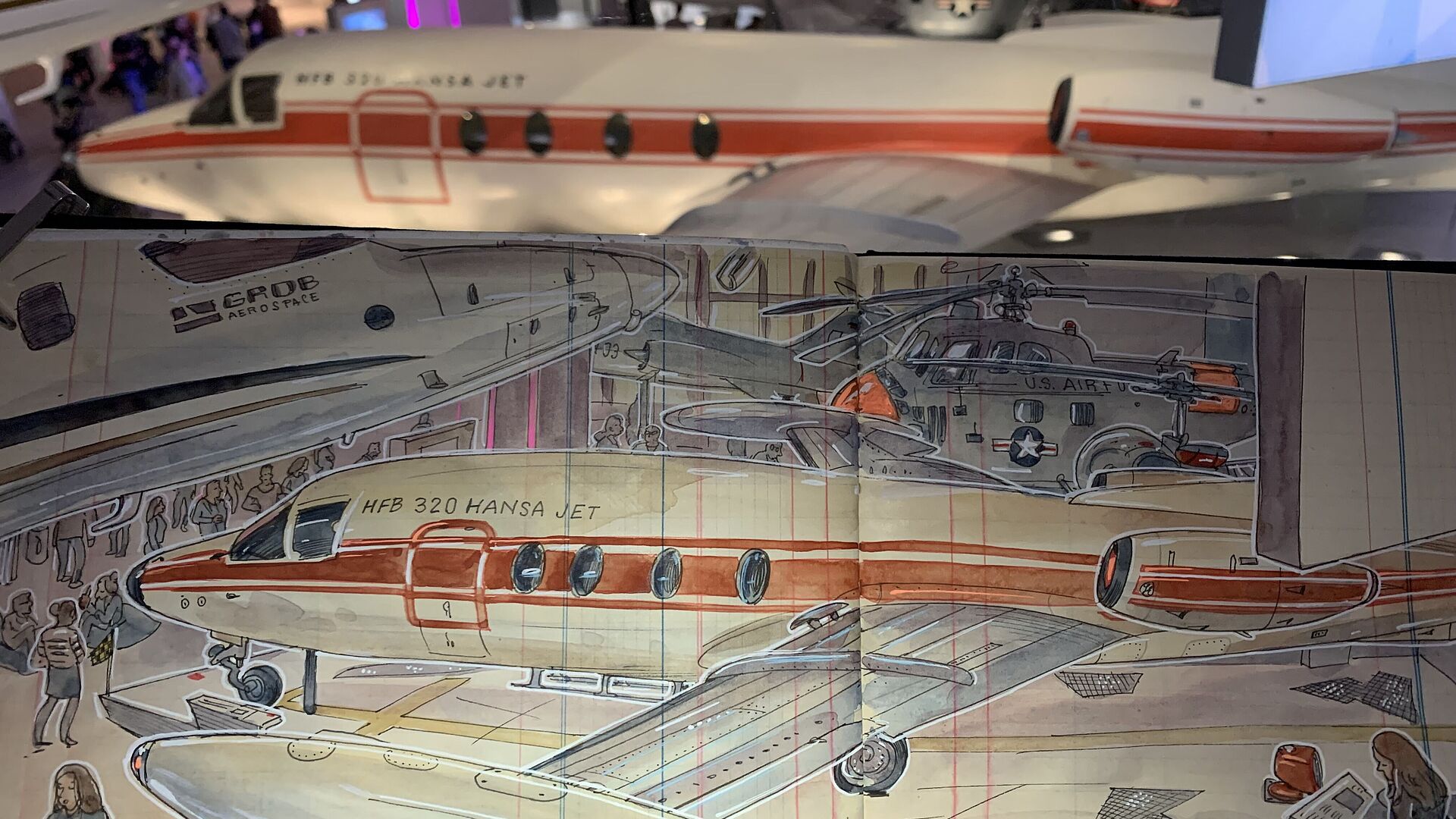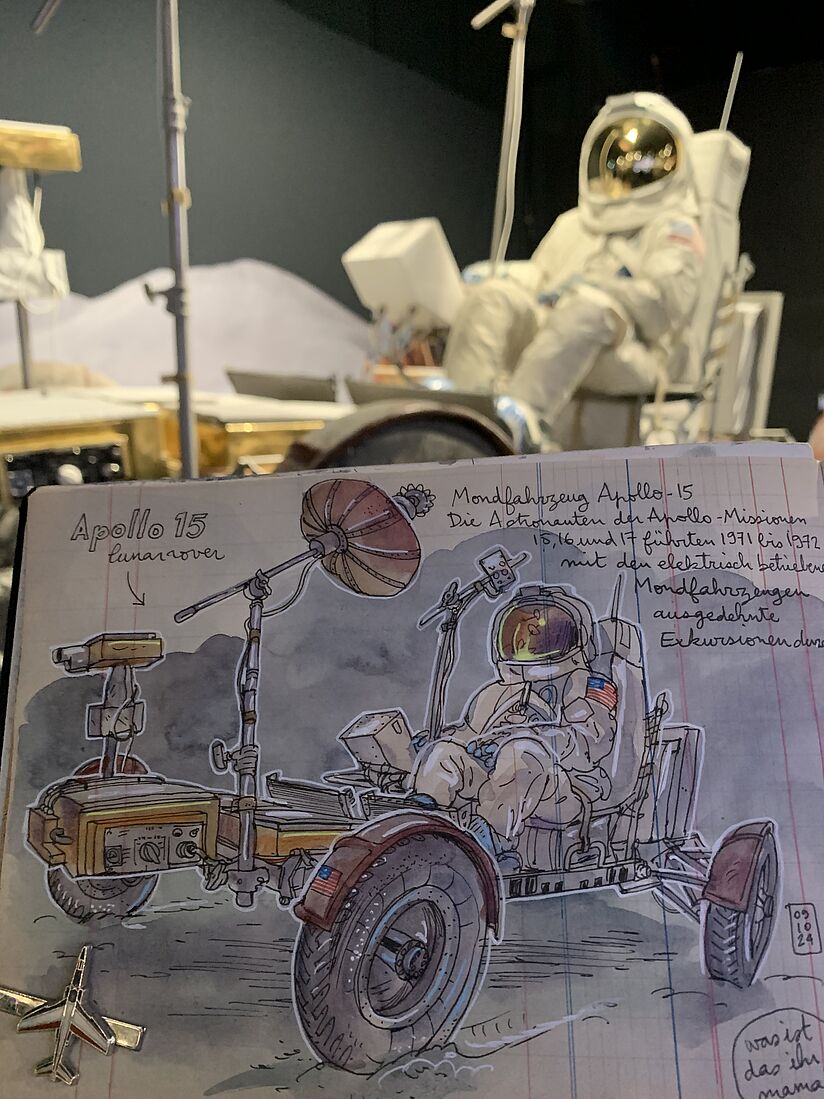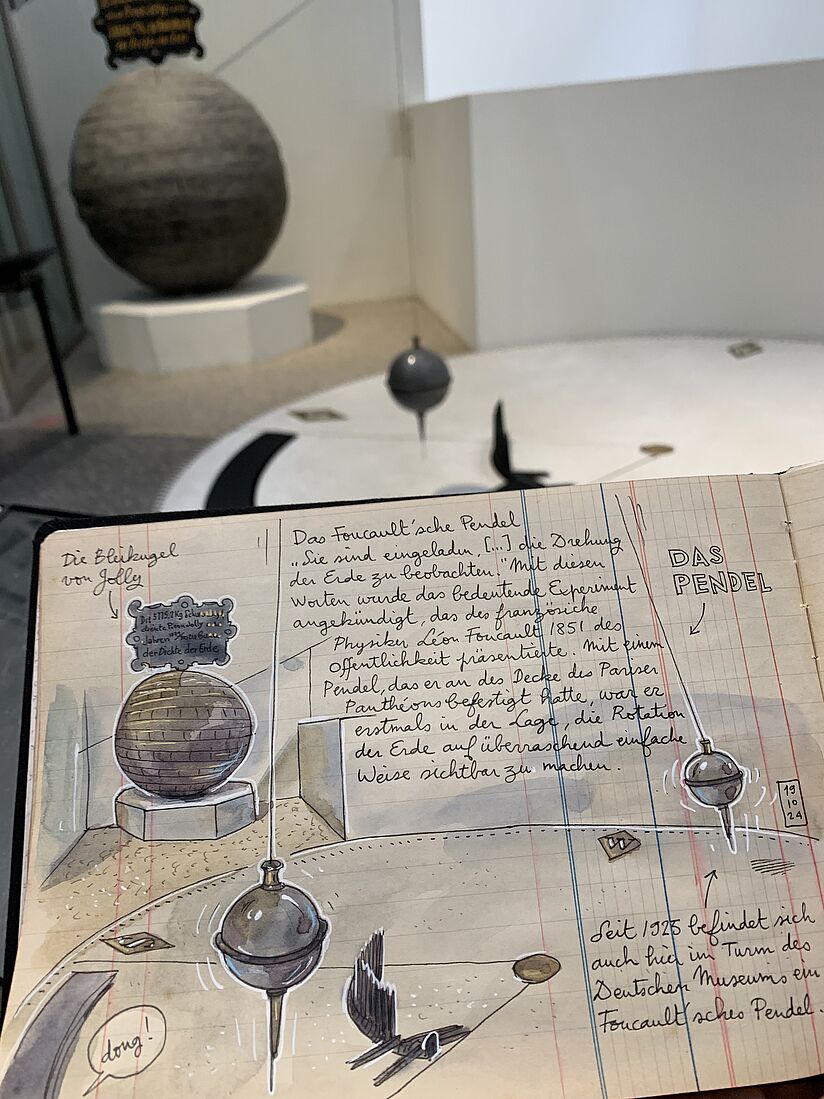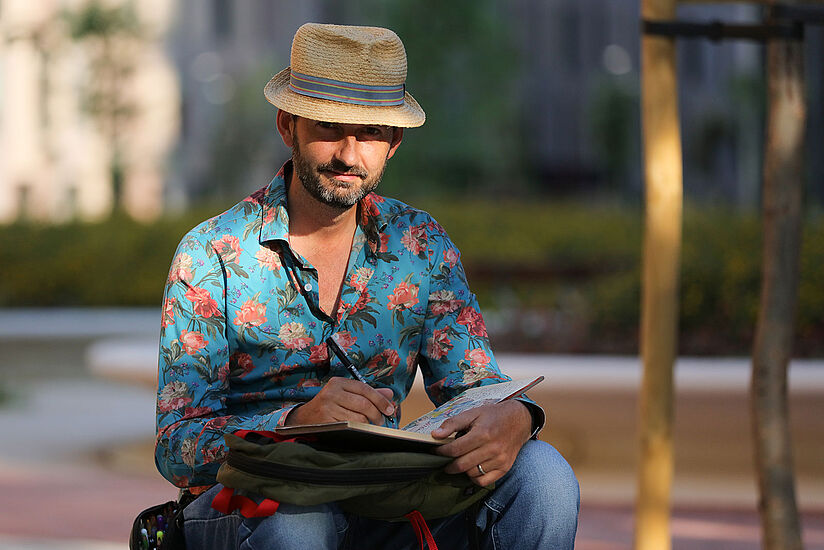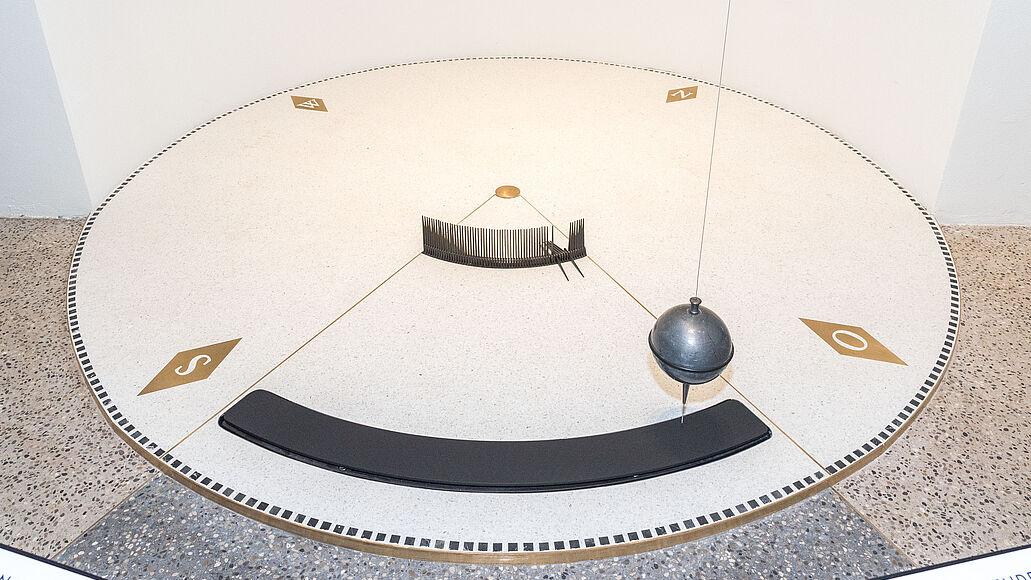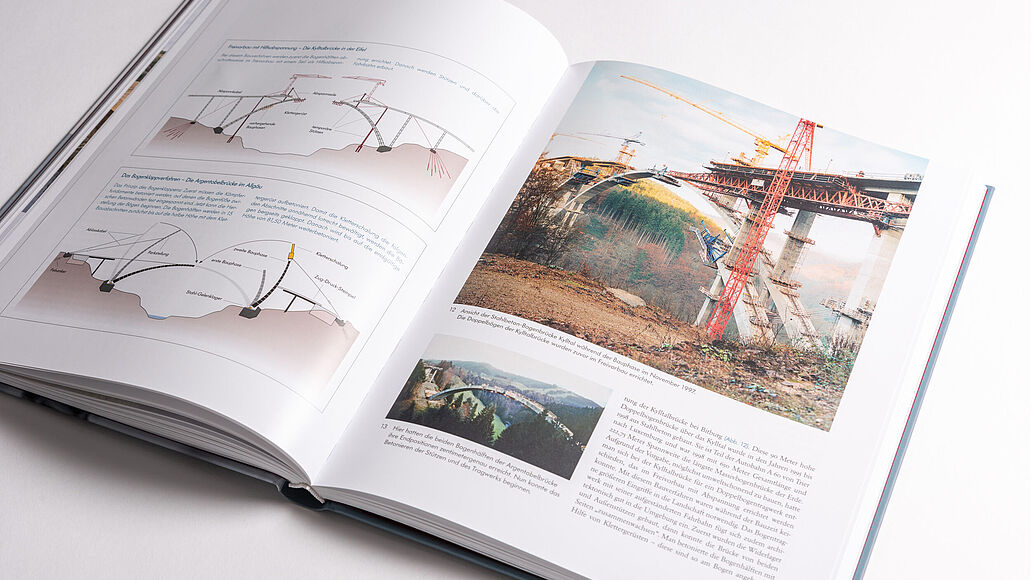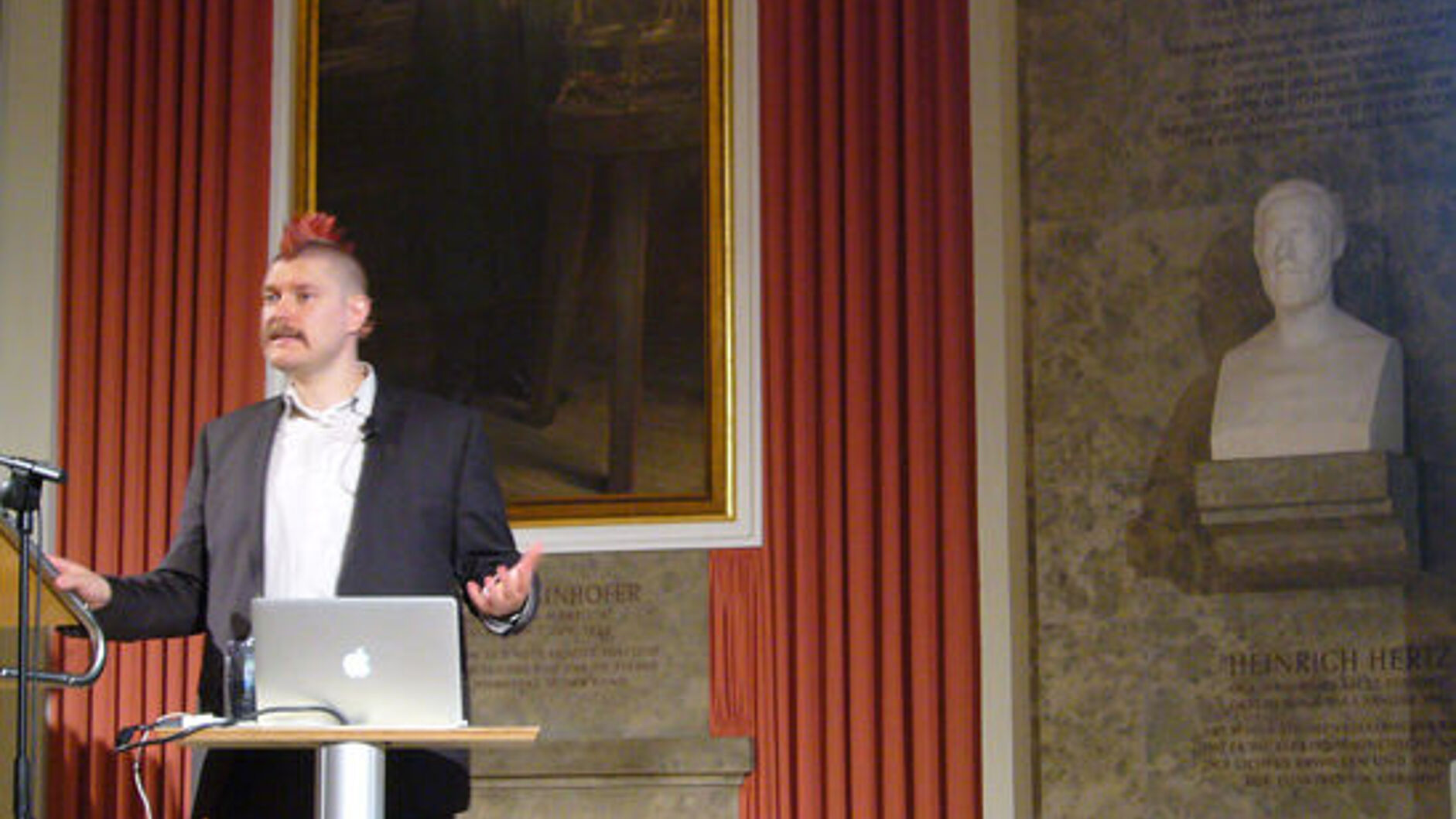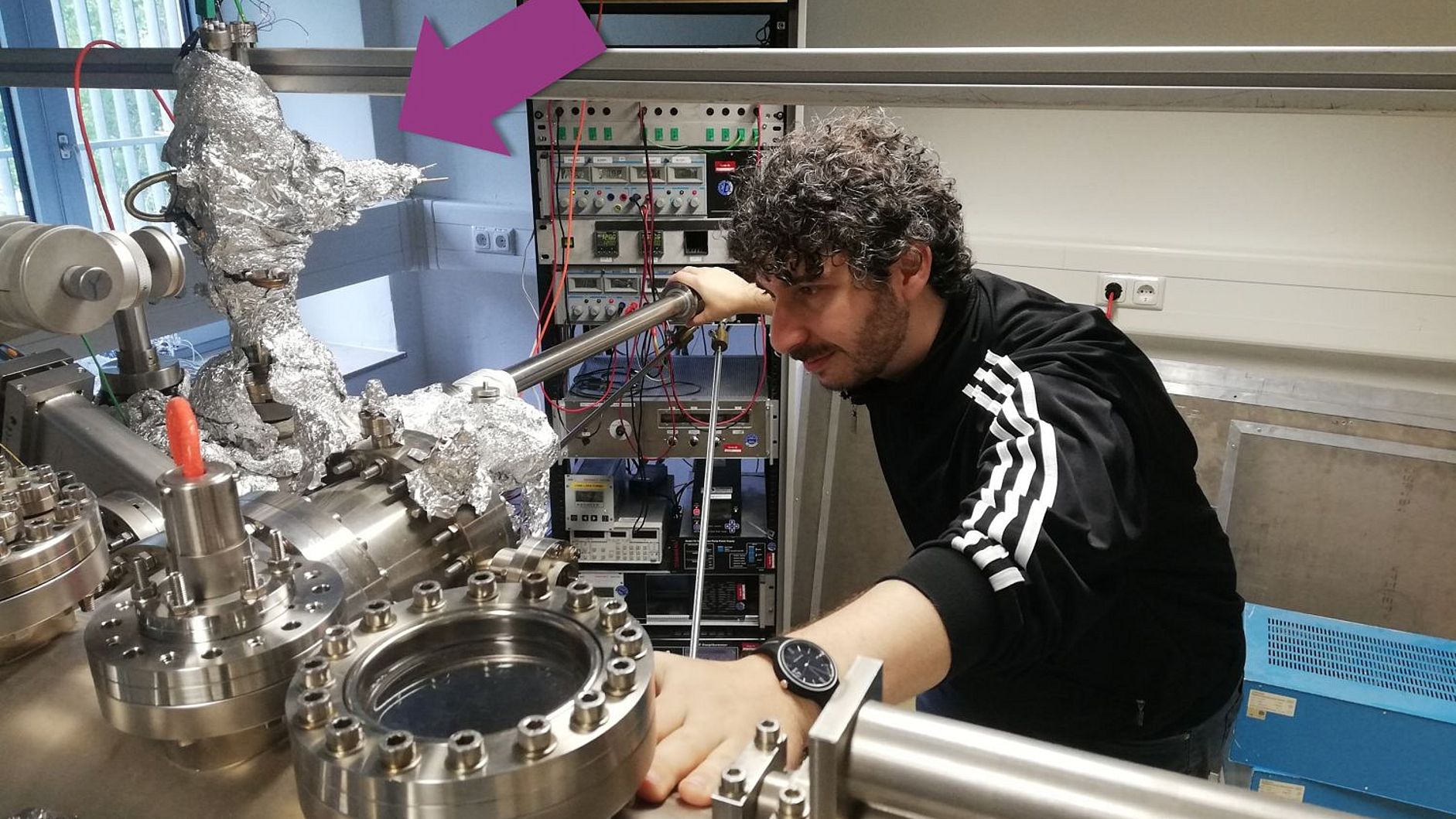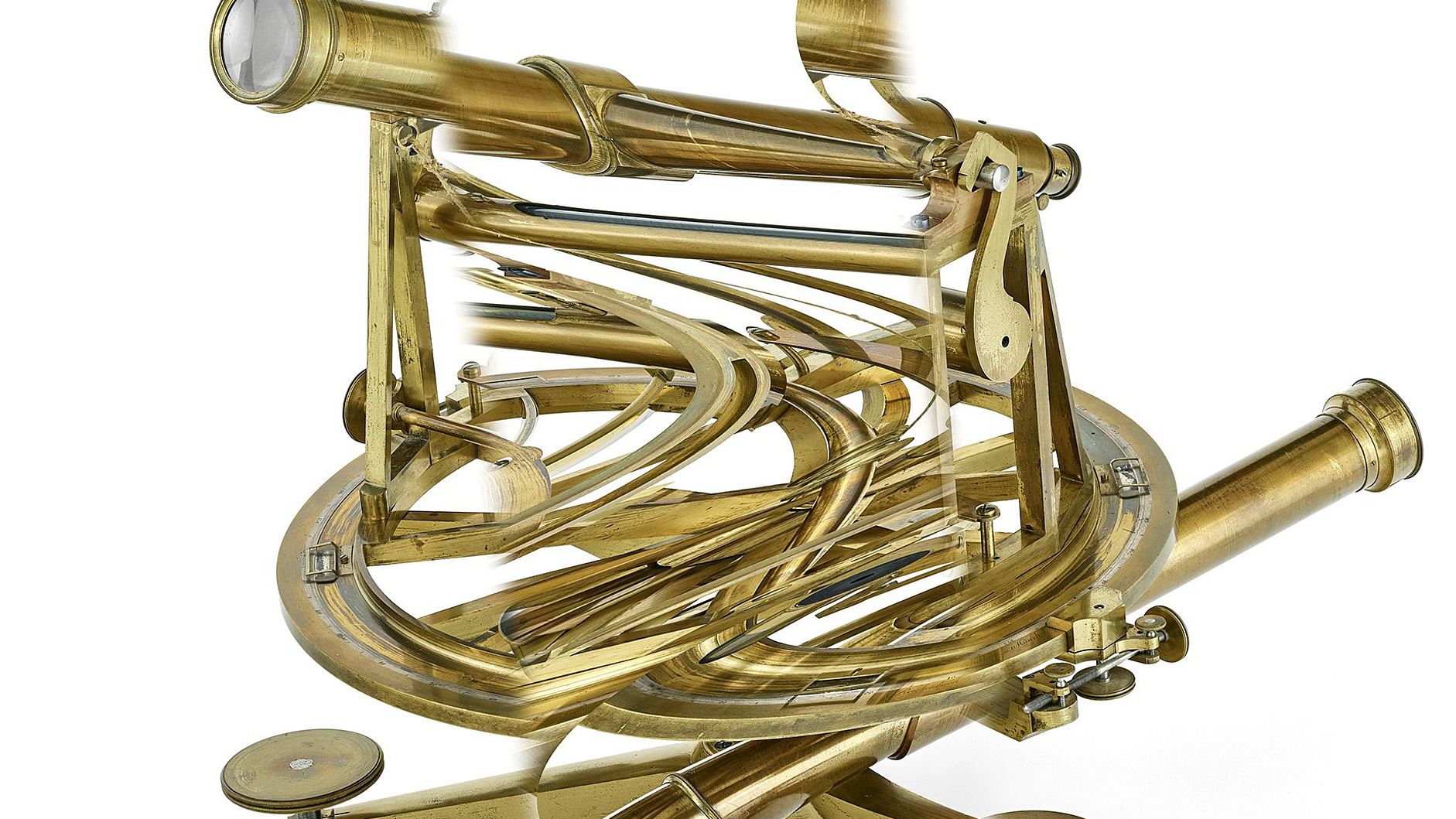A: What do you like about museums?
L: I have a kind of addiction to museums. I couldn't travel to a place without visiting a museum. A museum is very dense, it's concentrated. It's a part of history. I learn something new every day when I visit a museum and of course especially when I can immerse myself in a museum as deeply as I did when I worked with the Deutsches Museum. Being curious, stopping in front of an object that may not initially appeal to you, but then you see it and realise that it was important at the time: for example, the "dog kennel" [see (1) at the end of the article]. It's not an object I would have thought of before sketching it. But it's super cute and tells us something about the first concrete building in Germany. How many concrete buildings do we have today? It's crazy. And this tiny "doghouse" was at the beginning.
A: Was there an object that was particularly challenging, strange or difficult for you?
L: That's a difficult question, because many objects were difficult to draw. The Foucault pendulum comes to mind because it's so uncomplicated that I couldn't get lost in the details, and also because it's in motion. I love the simplicity of this experience. The idea behind it is so clever. You've found a way to prove that the earth rotates through such a simple experiment that everyone can understand. It was one of the most difficult but also simplest objects, and it was interesting at the same time.
